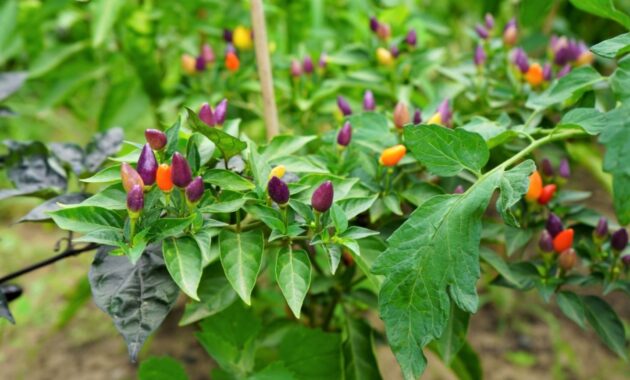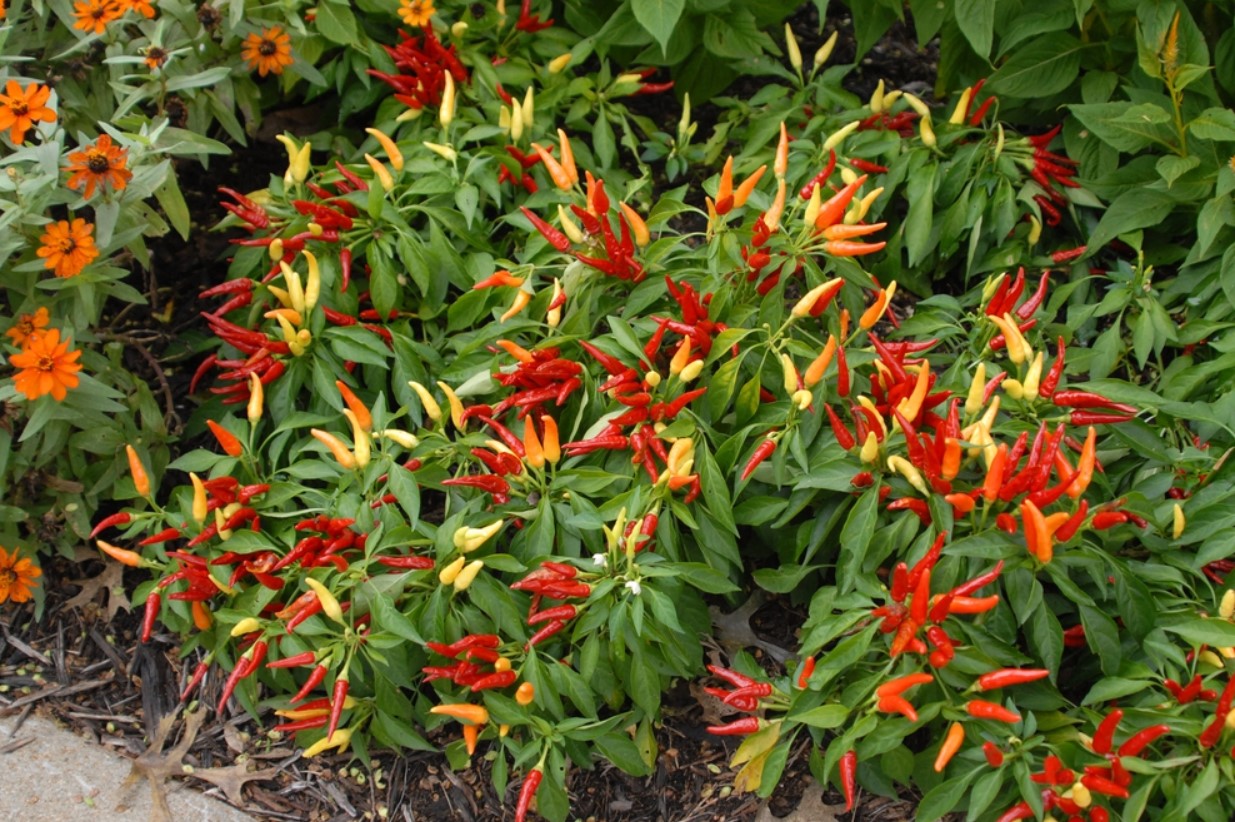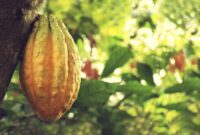
Capsicum annuum is one of the most well-known and widely cultivated species of the Capsicum genus. It includes a wide range of peppers, from sweet bell peppers to spicy chilies like jalapeños and cayenne peppers. This plant is a favorite among gardeners and chefs due to its versatility, variety, and ease of growth. In this guide, we’ll dive into the characteristics, growing tips, and common uses of Capsicum annuum.
Key Characteristics of Capsicum annuum
| Feature | Description |
|---|---|
| Scientific Name | Capsicum annuum |
| Common Names | Bell pepper, chili pepper, sweet pepper, hot pepper |
| Plant Type | Annual in temperate climates, perennial in tropical areas |
| Height | 1-4 feet tall, depending on variety |
| Fruit Shape/Color | Varies: can be bell-shaped, elongated, or conical in green, red, yellow, orange, and purple |
| Heat Level | From mild (bell peppers) to moderately hot (jalapeños) |
| Growth Habit | Bushy with dark green, oval leaves and small white flowers |
Popular Varieties of Capsicum annuum
- Bell Peppers:
- Heat Level: 0 Scoville Heat Units (SHU), completely mild.
- Description: These peppers come in vibrant colors—green, red, yellow, and orange. They are sweet and often eaten raw or cooked in various dishes.
- Jalapeños:
- Heat Level: 2,500-8,000 SHU.
- Description: Medium-sized chili with moderate heat. Jalapeños are frequently used fresh in salsas or pickled.
- Cayenne Peppers:
- Heat Level: 30,000-50,000 SHU.
- Description: Long, thin, and very hot, cayenne peppers are typically dried and ground into powder, often used in cooking for a spicy kick.
- Poblano Peppers:
- Heat Level: 1,000-2,000 SHU.
- Description: Mild chili, often roasted and used in Mexican cuisine, especially for dishes like stuffed poblanos (chiles rellenos).
- Banana Peppers:
- Heat Level: 0-500 SHU.
- Description: Sweet or mildly spicy, banana peppers are long, yellow peppers that are often pickled or used in salads.
Growing Capsicum annuum: A Step-by-Step Guide
1. Choosing a Location
Capsicum annuum thrives in warm climates and loves the sun. Make sure to plant it in a spot where it can receive 6-8 hours of direct sunlight each day.
- Outdoor: Choose a sunny, well-drained spot in your garden.
- Indoor: Place your plants near a sunny window or under grow lights if you’re growing indoors.
2. Soil Requirements
Capsicum annuum grows best in well-drained, loamy soil that is rich in organic matter. The ideal soil pH is between 6.0 and 7.0.
- Amend the soil: Before planting, enrich the soil with compost or organic matter to boost fertility.
- Fertilizer: Use a balanced fertilizer (10-10-10) at planting time and again when fruits begin to form.
3. Planting Capsicum annuum Seeds
- Starting Indoors: Start seeds indoors about 8-10 weeks before the last expected frost. Sow the seeds 1/4 inch deep in a seed-starting mix.
- Temperature: Keep the temperature warm (around 70-80°F) for proper germination. Seeds typically sprout in 7-14 days.
- Transplanting Outdoors: After all danger of frost has passed and the soil has warmed, transplant seedlings outdoors, spacing them about 18-24 inches apart.
4. Watering and Fertilizing
- Watering: Water regularly, but avoid overwatering. Keep the soil consistently moist but not waterlogged. Water deeply about once or twice a week.
- Fertilizing: After the plants are established, apply a balanced fertilizer every 4-6 weeks or use compost to feed the soil.
5. Pruning and Staking
- Pruning: Regularly prune any dead or yellowing leaves to promote air circulation and prevent diseases.
- Staking: For taller varieties like jalapeños or bell peppers, use stakes or tomato cages to support the plants, especially when they are heavy with fruit.
Common Pests and Diseases
1. Pests
- Aphids: These small sap-sucking insects can cause distorted growth. Control them by spraying the plants with neem oil or insecticidal soap.
- Whiteflies: Small white flies that can weaken plants by feeding on the sap. Use sticky traps or spray neem oil to control them.
- Cutworms: These larvae can cut down young plants at the soil level. Protect seedlings by using collars around the stems or applying organic insecticides.
2. Diseases
- Blossom End Rot: A common issue where the bottom of the pepper fruit turns black. It’s caused by calcium deficiency or inconsistent watering.
- Bacterial Leaf Spot: Shows up as dark, water-soaked spots on leaves. Remove infected leaves and avoid overhead watering to prevent the spread of the disease.

Harvesting Capsicum annuum
Capsicum annuum plants typically start producing fruits about 60-90 days after transplanting.
- Bell Peppers: Can be harvested when they reach full size and are still green, or you can leave them on the plant to ripen to red, yellow, or orange.
- Hot Peppers: Jalapeños, cayenne, and other hot peppers are usually harvested when they turn red, though they can be picked when green for a milder taste.
To harvest, cut the peppers from the plant with scissors or a sharp knife, leaving a small stem attached.
Culinary and Medicinal Uses of Capsicum annuum
1. Culinary Uses
Capsicum annuum is incredibly versatile in the kitchen:
- Bell Peppers: Used in salads, stir-fries, stuffed pepper dishes, and as a raw snack.
- Jalapeños: Common in Mexican cuisine, used in salsas, sauces, and pickles.
- Cayenne Peppers: Often dried and ground into cayenne powder, used to add heat to soups, stews, and marinades.
- Banana Peppers: Frequently pickled or added to sandwiches and pizzas for a mild heat.
2. Medicinal Uses
The compound capsaicin, found in the hotter varieties of Capsicum annuum, has several medicinal benefits:
- Pain Relief: Capsaicin creams are used topically to relieve muscle and joint pain.
- Weight Loss: Capsaicin may boost metabolism and help with fat burning.
- Circulatory Health: Some studies suggest that capsaicin can improve circulation and heart health by reducing cholesterol levels.
Conclusion: Why Grow Capsicum annuum?
Capsicum annuum is a rewarding plant to grow, offering a variety of flavors, colors, and heat levels to suit any palate. Whether you’re looking for sweet bell peppers to add crunch to your salads or hot jalapeños to spice up your meals, this versatile plant is a great addition to your home garden. With a little care and attention, you’ll be harvesting your own fresh peppers in no time!



